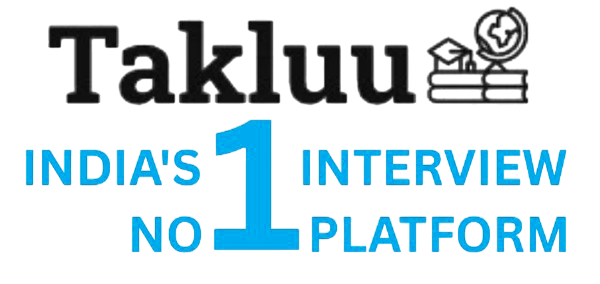Regression analysis is a statistical method used to examine the relationship between one dependent variable and one or more independent variables. It is used to predict outcomes, identify trends, and understand the strength of relationships in data.

Regression analysis is a statistical method used to examine the relationship between one dependent variable and one or more independent variables. It is used to predict outcomes, identify trends, and understand the strength of relationships in data.
Descriptive statistics summarize and describe the main features of a dataset, using measures like mean, median, mode, and standard deviation. Inferential statistics use sample data to make predictions or inferences about a larger population, often employing techniques like hypothesis testing and confidence intervals.
Some common data analysis tools and software include:
1. Microsoft Excel
2. R
3. Python (with libraries like Pandas and NumPy)
4. SQL
5. Tableau
6. Power BI
7. SAS
8. SPSS
9. Google Analytics
10. Apache Spark
Clustering in data analysis is the process of grouping similar data points together based on their characteristics, without prior labels. It is an unsupervised learning technique. In contrast, classification involves assigning predefined labels to data points based on their features, using a supervised learning approach.
The purpose of feature engineering in data analysis is to create, modify, or select variables (features) that improve the performance of machine learning models by making the data more relevant and informative for the analysis.
I would assess my surroundings for safety, check for injuries, find a safe location, signal for help, and gather supplies if possible.
The problem could be due to factors like decreased demand, increased competition, poor product quality, or lack of innovation. To increase revenues, I would suggest:
1. Conduct market research to understand customer preferences and trends.
2. Improve product quality and features based on feedback.
3. Innovate by introducing new models or technologies (e.g., electric vehicles).
4. Enhance marketing strategies to reach a broader audience.
5. Explore new sales channels, such as online sales or partnerships.
6. Offer promotions or financing options to attract more buyers.
Yes, they should consider buying the company if the database provides valuable insights, has a competitive advantage, and can generate revenue through licensing or services.
The investment of 600 crore seems high compared to the potential revenue from selling the product at 15 lakh per house. To assess viability, we need to calculate the break-even point and consider market demand, competition, and potential barriers to adoption. If the market is large enough and the product is competitive, it could be a worthwhile investment; otherwise, it may pose significant financial risks.
I would first identify the reasons for their lack of productivity through one-on-one conversations. Then, I would provide support, set clear expectations, and offer resources or training if needed. If the situation doesn't improve, I would consider reassigning their tasks or discussing further actions with management.
A project time schedule can be compressed through the following methods:
1. **Fast Tracking**: Overlapping tasks that were originally planned to be done sequentially.
2. **Crashing**: Adding more resources to critical path tasks to complete them faster.
3. **Scope Reduction**: Reducing project scope or deliverables to shorten the timeline.
4. **Resource Leveling**: Adjusting the start and finish dates based on resource availability to optimize the schedule.
Scope management involves defining, controlling, and managing all the work required to complete a project successfully. This includes identifying project requirements, documenting them, and ensuring that all necessary tasks are included while preventing scope creep.
A Work Breakdown Structure (WBS) is a hierarchical decomposition of a project into smaller, more manageable components or tasks. It helps in organizing the project scope and provides a clear framework for estimating the time, resources, and costs required for each task. By breaking down the work, it allows for more accurate work estimates, better resource allocation, and improved tracking of project progress.
The proportion of RCC M:20 mix is 1:1.5:3, which means 1 part cement, 1.5 parts sand, and 3 parts aggregate.
In a difficult situation, I would first assess the problem to understand its root cause. Then, I would communicate openly with my team to gather input and brainstorm solutions. Prioritizing tasks, staying organized, and remaining calm are crucial. Finally, I would implement the chosen solution, monitor progress, and adjust as needed while keeping stakeholders informed.
In CSS, a class is defined with a dot (.) and can be applied to multiple elements, while an ID is defined with a hash (#) and should be unique to a single element on a page.
HTML5 is the latest version of HTML, which includes new features such as native support for audio and video, new semantic elements (like `<article>`, `<section>`, and `<header>`), improved parsing rules, and better support for web applications with APIs like local storage and canvas. HTML, on the other hand, refers to earlier versions that lack these enhancements.
A web server handles an HTTP request by following these steps:
1. **Receive Request**: The server listens for incoming HTTP requests on a specific port (usually port 80 for HTTP or port 443 for HTTPS).
2. **Parse Request**: It parses the request to extract the method (GET, POST, etc.), URL, headers, and body.
3. **Process Request**: The server determines how to respond based on the request. This may involve retrieving files, querying a database, or executing server-side scripts.
4. **Generate Response**: It creates an HTTP response, which includes a status code (like 200 for success), headers, and the requested content (like HTML, JSON, etc.).
5. **Send Response**: The server sends the response back to the client (usually a web browser) over the network.
6. **Log Request**: Optionally, the server logs the request details for monitoring and analysis.
The box model in CSS describes the rectangular boxes generated for elements in a document tree and consists of four areas: content, padding, border, and margin. The content is the innermost area, surrounded by padding, then the border, and finally the margin, which is the outermost area.
Some popular frontend frameworks and libraries are:
1. React
2. Angular
3. Vue.js
4. Svelte
5. Bootstrap
6. jQuery
7. Ember.js
8. Backbone.js
